LEADING MEDICINE
KNOW YOUR NUMBERS:
How Your Doctor Can Help You Stay in a Healthy Range

Surgical Solutions for Back Pain
Blood Pressure in Your 20s & 30s

How Your Doctor Can Help You Stay in a Healthy Range

Surgical Solutions for Back Pain
Blood Pressure in Your 20s & 30s
While every pregnancy is unique, most women expect to have a typical pregnancy. However, some women can experience what is called a high-risk pregnancy. A pregnancy is considered high-risk when there are identified health risks for the mother, the baby or both.
“If you have a high-risk pregnancy, it is important to work closely with your doctor,” said Dr. Moona Haque, board-certified obstetrician-gynecologist joining Houston Methodist Obstetrics and Gynecology Associates at Sugar Land this February. “The term high-risk may seem scary, but many women experience healthy pregnancies and normal deliveries — despite needing extra attention.”
A variety of factors can make a pregnancy high risk. The most common include:
■ Age: Risks are higher for women over 35 or under 18.
■ Carrying multiples: Women pregnant with twins or triplets are at higher risk for complications.
■ Lifestyle factors: Alcohol abuse, drug use and smoking have serious negative impacts on pregnancy.
■ Preexisting health conditions: Conditions like autoimmune disorders, diabetes, obesity, high blood pressure, polycystic ovary syndrome (PCOS) and thyroid disease could pose risks.

■ Pregnancy-related health conditions: Conditions that arise during pregnancy, such as birth, genetic disorders,
If you have or think you may have a high-risk pregnancy, it is vital to start prenatal care early. To schedule an appointment with a high-risk pregnancy specialist, visit houstonmethodist.org/ obgyn-sl or call 346-456-5328 .
gestational diabetes, preeclampsia and previous pregnancy complications, can also put you at risk.
While some complications are unavoidable, specialists, such as Haque, work to minimize and help you achieve the healthiest pregnancy possible.
You can expect more frequent visits with your provider during a high-risk pregnancy. They may even refer you to a specialist in maternal-fetal medicine, genetics, pediatrics or other areas.
High-risk pregnancies require close monitoring. Depending on the circumstance, your doctor may want you to take additional tests on top of routine tests, such as:
■ Genetic testing
■ Specialized ultrasounds to screen for birth defects or preterm birth

■ Nonstress tests to monitor baby’s heartbeat
■ Biophysical profiles - ultrasounds to monitor baby’s breathing, movements and amniotic fluid
“Women with high-risk pregnancies have a higher chance of needing labor induction or C-sections,” Haque noted. “Your doctor will work with you as your due date approaches to help you make the safest decision for you and your baby.”
Getting early and thorough prenatal care is critical to minimizing risks, but there are some other measures you can take on your own:
■ See your doctor for a preconception visit
■ Manage preexisting conditions
■ Maintain a healthy body weight
■ Avoid drugs and alcohol
■ Quit smoking
■ Practice safe sex
■ Reduce stress
“Many people who have high-risk pregnancies don’t experience any problems and deliver healthy babies,” Haque said. “It’s just important to keep in close contact with your doctor to reduce complications and risks.” •
Having spine surgery is usually a last resort for those dealing with chronic back pain. If you are experiencing back problems due to structural issues that can be helped by surgery, your doctor may advise you on your options.
“Spine surgery is complex and involves a high level of precision,” said Dr. Hari Mitra, orthopedic spine surgeon at Houston Methodist Neuroscience & Spine Center at Sugar Land. “Advancements in spine surgery have made it possible to use minimally invasive techniques that allow for smaller incisions, less pain and shorter recovery times.”
Most back pain resolves on its own with nonsurgical treatments that might include anti-inflammatory medications, heat or ice, over-the-counter pain patches, therapeutic massage, or physical therapy. But, if nonsurgical treatments haven’t worked and you’re experiencing weakness or difficulty performing basic activities, such as standing or walking, you should see your doctor.
According to Dr. Mitra, surgery doesn’t relieve all types of back pain, but it is an effective solution for certain types of back problems. Surgery may be recommended if you suffer from:
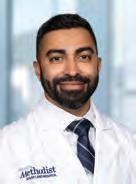

■ Degenerative disk disease or herniated disks
■ Fractures or injuries to the bones in the spine
■ Spinal deformities, such as scoliosis or kyphosis (abnormal curvatures of the spine)
■ Spinal stenosis (narrowing of the spinal canal)
■ Spondylolisthesis (when one vertebra in the lower back slips forward on top of another)
■ Weak or unstable spine caused by infections or tumors
“During minimally invasive spine surgery, smaller incisions are made by the surgeon instead of one long incision down the back, as in open surgery,” Mitra noted. “The surgeon can view the spine using smaller, specialized surgical instruments and an operating microscope.”
Minimally invasive techniques can be used in these types of spinal surgery:
■ Diskectomy is a common surgery done to remove the herniated portion of a disk pressing on a nerve.
■ Laminectomy or decompression surgery relieves pressure caused by spinal stenosis by removing bone to enlarge the spinal canal.
■ Spinal fusion permanently fuses two vertebrae together to eliminate painful movement between them. This may be done to help with degenerative disk disease, recurrent herniated disks, spinal deformities, spinal instability and other disorders.
If your back pain persists despite home remedies, physical therapy and other treatments, it may be time to see a specialist to find out if surgery is an option for you. •M
To schedule a consultation with a specialist at the Houston Methodist Neuroscience & Spine Center at Sugar Land, visit houstonmethodist.org/neuro-sl or call 281.205.4662 .
It all started with a tiny insect bite on Jackie’s left leg, and it led to a surgery that saved her foot and her ability to walk.
When the bug bite didn’t heal after several weeks, she sought help from her primary care physician and underwent wound care from a home health nurse. A radiologist performed an X-ray called an arteriogram, which uses special dye to see inside the arteries. It showed that an artery was blocked in Jackie’s leg. Stents were implanted to open the blockage and restore blood flow.
Despite these procedures and wound care at home, her wound did not heal. In fact, she developed a second wound on the same foot. Additional procedures were performed, but her wound only got worse. “My daughter and my home health nurse were worried,” Jackie said. “They knew I needed help right away.”
When Jackie went to the nearest emergency room for evaluation. She was admitted to the hospital so she could get intravenous (IV) antibiotics to treat the infection that had developed in her foot. Based on her health history and worsening wounds, Jackie was at high risk for complications from infection and was facing the possibility of a below-theknee amputation.
Dr. Charlie Cheng, board-certified vascular surgeon with Houston Methodist Cardiovascular Surgery Associates at Sugar Land, was called in to evaluate Jackie’s leg. He recognized that her wound was still receiving inadequate
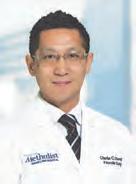
blood flow despite previous procedures. An arteriogram revealed a blockage.
“A wound needs a healthy blood supply to heal properly,” Cheng explained. “New blood carries vital oxygen and nutrients to the wound, which are keys to successful healing. A wound that is not getting enough blood takes much longer to heal, and in some cases, may never heal.”
Cheng opened the blockage with a stent, restoring blood flow to Jackie’s foot and the wound quickly began to heal. “I was up and walking around in days,” she said, “and now there’s not even a scar!”
Patients with diabetes, high blood pressure, high cholesterol or vascular disease can suffer from blockages in their veins or arteries in their legs and feet, leading to inadequate blood flow. This can cause leg pain that limits the ability to to walk and can prevent you from doing activities that you enjoy.

As the disease progresses, it may lead to wound development in the leg and reduce the body’s ability to repair itself in the event of a cut or scratch. Without proper healing, the wound can quickly get worse or infected and may require amputation.
For many patients, treatment for a wound without adequate blood flow isn’t enough. To properly heal the wound and prevent new future wounds, the vascular disease must be addressed in a process called revascularization.
Your care begins with an evaluation by a vascular surgeon at Houston Methodist Cardiovascular Surgery Associates. After the exam, your doctor will schedule diagnostic studies to evaluate the vascular
disease in your leg. If disease of the arteries or veins is detected, you’ll be scheduled for treatment.
Available treatment options include:
■ Arteriogram and endovascular procedures for balloon and stenting: Contrast dye and an X-ray allows the surgeon to see the arteries. Procedures, such as balloons or stents, can be used to open the artery and restore blood flow.
■ Open surgical bypass: The surgeon implants a portion of your own vein or a synthetic material to create a bypass around the blockage or narrowing. Once in place, the new bypass restores blood flow.
■ Venous ablation: The surgeon uses a special tube, or catheter, inserted into the damaged vein through a small incision in the leg. This tube is then heated with a laser or radio waves to close the vein. Blood is then diverted into a normal vein, improving flow.
“Our vascular surgeons are experts in both bypasses and endovascular procedures, so we are able to offer a customized solution for each patient based on their unique needs,” Cheng noted.
Because of the nature of leg wounds and the role vascular disease plays in delaying healing, it’s important to act quickly and see a specialist who can begin treatment as soon as possible. Doing so can help prevent further tissue damage or amputation. If you have leg pain, treatment can improve your lifestyle and allow you to return to activities you enjoy. •
Dr. Charlie ChengProtect your feet and legs. Seek treatment for pain or active wounds right away. Vascular surgeons at Houston Methodist Cardiovascular Surgery Associates at Sugar Land also treat other diseases of the blood vessels, including:

• Aortic aneurysms
• Blood clots
• Carotid artery for stroke prevention
• Dialysis access (creation and declotting)
• Lymphedema
• Renal and mesenteric arteries
• Varicose and spider veins
The board-certified experts at Houston Methodist Cardiovascular Surgery Associates at Sugar Land are able to diagnose and provide prompt treatment for all vascular conditions. To schedule an appointment with a vascular specialist at Sugar Land, visit houstonmethodist.org/spg or call 713-352-1820
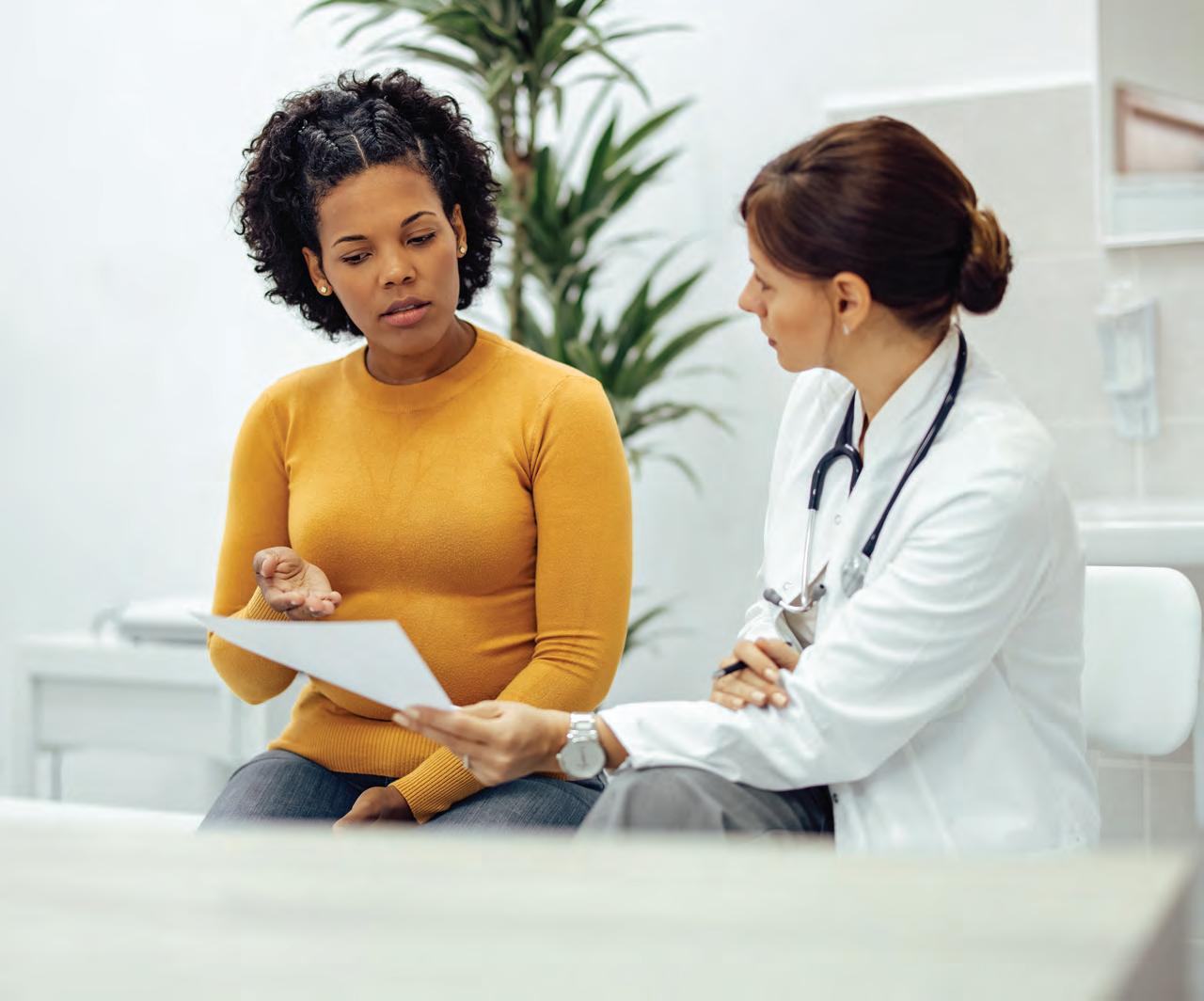
Your primary care provider, or PCP, is one of your most important health resources. But what does a PCP do?
“The patient and PCP are health partners,” explained Dr. Alexander Laceras, boardcertified family doctor with Houston Methodist Primary Care Group in Rosenberg. “The PCP can help diagnose health problems, prevent health challenges and understand the best ways to support your health.”
Your PCP performs annual check-ups and is usually the first stop if any illness or health concerns arise. They help you understand and reduce your risk for developing a wide variety of health problems. PCPs monitor your health and can recommend testing or refer you to specialty care when needed. Together, you and your PCP can help you continue to live the life you love.
“ There’s nothing weak about seeing the doctor — it’s the opposite,” Laceras said. “Working with your PCP can help you take charge of your health.”
To keep an eye on your health, your PCP monitors several key numbers to check your risk for developing serious diseases. For a helpful next visit, be prepared to talk with your doctor about these important indicators.
Heart disease is the leading cause of death in both men and women in the U.S. By understanding your numbers, you can reduce your risk of developing cardiovascular disease as well as other health conditions, such as stroke, diabetes and obesity.
■ Blood Pressure: A measurement of the amount of force your heart needs to pump blood throughout your body. Blood pressure is measured by two numbers: systolic (when your heart pumps blood out) and diastolic (when your heart rests between beats).
✓ Healthy target: less than 120/80 mmHg
Risks: High blood pressure can negatively affect the function of your heart and other major organs, such as the kidney and brain. It’s also the leading cause of stroke.

■ Body Mass Index: A measure of your weight divided by your height, squared.
✓ Healthy target: 18.5 to 25 kg/m2
Risks: The higher your BMI, the greater your risk of heart disease, high blood pressure, type 2 diabetes and certain cancers.
■ Fasting Blood Sugar: A measure of the amount of glucose in your blood after fasting for eight to 12 hours.
✓ Healthy target: below 100 mg/dL
Risks: Also called hyperglycemia, high blood sugar can damage the blood vessels and nerves that control your heart over time. It can also lead to type 2 diabetes.
■ Total Cholesterol: A measurement of cholesterol (a fat-like substance made in the liver and found in foods) in your blood.
✓ Healthy target: less than 200. Talk to your doctor to understand all of your cholesterol (lipid) levels, including LDL, HDL and triglycerides, and what they mean for your heart health.
Chances are you may have seen a nurse practitioner (NP) or physician assistant (PA) during a doctor’s office visit sometime in your lifetime. While they are not medical doctors, these highly trained health care providers work hand in hand with physicians as part of your health care team.
These providers have the expertise to diagnose and treat patients in a variety of specialties. They undergo years of medical training — in fact, most have a master’s degree or a doctorate. Working under the supervision of your doctor, PAs and NPs perform clinical exams, diagnose and treat illnesses, order labs and tests, and prescribe medications. Houston Methodist is home to dozens of such providers, who provide expert, compassionate care throughout the system.
Houston Methodist Primary Care Group provides primary care that’s personalized for you and your unique needs. To make an appointment with a primary care specialist in Sugar Land, visit houstonmethodist.org/pcg/southwest or call 713.441.7965
Risks: Excess cholesterol can build up in the walls of the arteries, leading to narrowing or blockages in your vessels, which increases your risk of heart attack or stroke.
Some risk factors are genetic or out of your control, like family history, age and sex — but there’s still a lot you can do to keep your numbers in a healthy range.
The best way to know your numbers and understand how they impact your health is to visit your PCP. As your health partner, they can perform or order tests to check these important measurements and help you make a personalized plan to get back within healthy range if necessary. Plans can include increasing your activity level, adopting healthy eating habits, quitting smoking, limiting alcohol and learning how to check and manage your blood pressure.
Building a partnership with your PCP and working with them to know and manage your numbers can dramatically reduce your risk of heart disease and other health complications. •
For these key measurements, keeping your results within these healthy ranges will go a long way toward maintaining your best heart health.
Blood Pressure: Less than 120/80 mmHg
Body Mass Index: 18.5 to 25 kg/m2
Fasting Blood Sugar: 80 to 99 mg/dL
Total Cholesterol: Less than 200 mg/dL
Talk with your primary care provider about these important tests and steps you can take to get back in a healthy range. If you have diabetes or other health conditions, your goal numbers may vary.
An injury can become a runner’s ultimate race-day spoiler. But there are simple things you can do during training that can help you avoid injuries while you run.
Dr. Alessandra Falk, orthopedic surgeon specializing in foot and ankle surgery at Houston Methodist Orthopedics & Sports Medicine at Sugar Land, breaks down steps you can take during training to minimize pain and injuries.

Rather than wear shoes that are too new, too old or just aren’t right for your foot, visit a specialty running-shoe store where the sales staff is knowledgeable about what shoe type works best for your running style and who can size you appropriately. Keep in mind, sock type can also be important in avoiding blisters.

“Proper running shoes are key when training for and running long distances,” Falk said. “Wearing the wrong shoe can increase the potential for injury.”
Race-day tip: On the morning of the race, wear shoes and socks you know you can run in comfortably.
An assessment provides a benchmark of your fitness based on strength, flexibility and cardiovascular endurance to help you set realistic training goals. Ask a certified trainer how to perform an assessment and set training goals.
Race-day tip: Don’t suddenly increase the number of miles you run. Make sure you have a plan too ramp up the mileage appropriately to avoid injury.
Don’t let your running injury go untreated. Schedule an appointment with an orthopedic specialist by visiting houstonmethodist.org/orthopedics-sl or by calling 281.201.0409 .
Overuse injuries can easily occur if training only includes running. “Cross-training is beneficial because it allows you to continue training and increase cardiovascular endurance while giving your running muscles a break,” Falk explained. “Add other workouts like cycling, strength training or swimming to break up your routine.”
Race-day tip: Cross-training before race day increases your overall flexibility and strength.
“An easy way to reduce your injury risk is to make stretching a part of your daily routine, not just before training,” Falk emphasized. Develop a routine that involves stretching the major muscle groups of both your upper and lower extremities. Race-day tip: Make time for stretching before and after your race. •
Even the most experienced runners are susceptible to injury. Dr. Alessandra Falk identifies these injuries that may plague runners:
■ Achilles tendon injuries. This painful overuse injury happens when the large tendon in the back of the ankle becomes irritated and inflamed.
■ Knee injuries. When knees twist suddenly while bearing weight, the meniscus (the shock absorber of the knee) can tear. A meniscus tear may also occur with the tearing of an anterior cruciate ligament (ACL).
■ Sprains, strains and muscle pulls. Ankle sprains and strains generally occur due to tripping over an unseen obstacle or inadequate stretching. Small muscle tears can affect nearly any muscle that is overused.
■ Stress fractures. This type of injury is often caused by overtraining, insufficient calcium or a flaw in training style, such as an uneven running stride.
If you experience any of these injuries, make an appointment to talk to a sports medicine specialist.
Even young adults can be affected by high blood pressure. In fact, almost half of adults over the age of 20 have elevated or high blood pressure — even if they appear healthy.
High blood pressure is often called a “silent killer” because many people don’t feel the effects until it’s too late. “High blood pressure quietly damages your heart and vessels over time, putting you at higher risk for heart attacks and strokes,” said Dr. Felix Thomas, cardiologist with Houston Methodist Cardiology Associates at Sugar Land.
High blood pressure in young adults is likely caused by a combination of genetics, diet and lifestyle. Contributing factors include smoking, vaping, frequent drinking, chronic stress, excess weight, poor diet and lack of exercise.
Blood pressure is the force that blood applies to the artery walls as it’s pumped throughout the body. The four blood pressure categories are:
If you’ve been having trouble controlling your high blood pressure, ask your primary care provider if you would benefit from seeing a specialist. To schedule an appointment with a cardiologist at Houston Methodist Cardiology Associates at Sugar Land, visit houstonmethodist.org/heart or call 281.456.3077 .
■ Normal blood pressure: Lower than 120/80 mmHG
■ E levated blood pressure: Between 120-129/80 mmHG
■ High blood pressure, stage 1: Between 130-139/80-90 mmHG
■ High blood pressure, stage 2: 140/90mmHG or higher
Having elevated or high blood pressure damages your heart and arteries by:
■ Forcing your heart to pump harder Over time this causes the heart muscle to thicken, making it harder for the heart to fill with and pump blood.
■ Narrowing and hardening your arteries. This can limit the normal flow of blood. L ong-term studies reveal that having high blood pressure greatly raises your risk of developing serious health conditions later in life. This is true even if you are in your 20s and 30s.
“Uncontrolled high blood pressure in young adults greatly increases their risk for heart disease as well as stroke, kidney disease and several eye conditions later in life,” Thomas explained.
Lowering your blood pressure involves making daily healthy decisions, including:
■ Eating healthy : Aim for a diet low in saturated and transfats and rich in fruits, vegetables and whole grains.
■ Getting plenty of exercise : Aim for 60 minutes per day.

■ Limiting alcohol : Keep your alcohol intake to one or two drinks per day — or eliminate it altogether.
■ Maintaining a healthy weight : If you’re overweight, losing as little as 10 pounds can lower your blood pressure.
■ Reducing sodium: Keep your salt intake under 1,500 mg/day.
■ Quitting smoking: While its effects on blood pressure are still being studied, giving up smoking greatly reduces your risk for heart attack, stroke and premature death.
Talking to your doctor about your risk factors is important, especially if you have a family history. “Make sure you start the discussion with your doctor if your blood pressure is consistently high and find out steps you can take to reduce your long-term risk factors,” Thomas said. •

To schedule an appointment with a breast surgeon with Houston Methodist Breast Surgery Partners at Sugar Land, visit houstonmethodist.org/spg or call 281.724.4276.

Regular screenings are key to early detection. To schedule a mammogram appointment, visit houstonmethodist.org/imaging or call 281.242.PINK (7465).
Maintaining breast health can be as simple as monthly self-exams and yearly mammograms — but feeling a lump in your breast can still cause immediate concern. Instead of jumping to conclusions, get answers to these important questions.
Healthy breast tissue will feel like a continuous, fibrous mesh across your breast. On its own, normal breast tissue is somewhat bumpy and sponge-like, while a breast lump will be noticeably firmer. Lumps may or may not be moveable and can range from the size of a pea to larger than a golf ball. Though usually painless, breast lumps can occasionally cause some discomfort.
“By performing regular, monthly self-breast exams, you can better understand the normal look and feel of your breasts,” said Dr. Michelle O’Shea, board-certified surgeon at Houston Methodist Breast Surgery Partners at Sugar Land. “Then you are more apt to notice a change in your breasts that seems abnormal and report it to your doctor.”
“Though most breast lumps are benign, or noncancerous, a woman cannot tell if her lump is malignant or benign simply by feeling it,” O’Shea said. “Every new lump that does not go away within two to four weeks needs a doctor’s examination.”
The likelihood of the lump being malignant increases with a family history of breast cancer, history of previous abnormal biopsies and increasing age. Additionally, other concerning symptoms include:
■ Lumps that change size
■ Nipple changes, including enlargement or bloody discharge
■ Skin changes over lump
If you find a lump or experience any of these symptoms, make an appointment with your primary care doctor or gynecologist who will examine your breast and determine if further testing is needed.
“Additional tests, such as a mammogram, ultrasound or biopsy to fully evaluate the lump are often recommended,” O’Shea said.
Though a woman’s risk of breast cancer is highest after age 50, even younger woman can develop breast cancer. This is especially true if you have a family history of breast cancer.
Starting at age 40, women should begin breast cancer screening with annual mammograms. If you have a family history of breast cancer, your doctor may recommend you start earlier or have genetic testing to determine your risk. Make sure to share your medical history with your primary care physician or gynecologist so they can determine when you should receive your first mammogram.
Mammograms, often with ultrasound, are very effective screening tools that can accurately identify even the smallest breast tumors. “Breast cancer found with regular screening mammography and during workup of symptoms allows us to find the earliest cancer with the best survival,” O’Shea advised. •
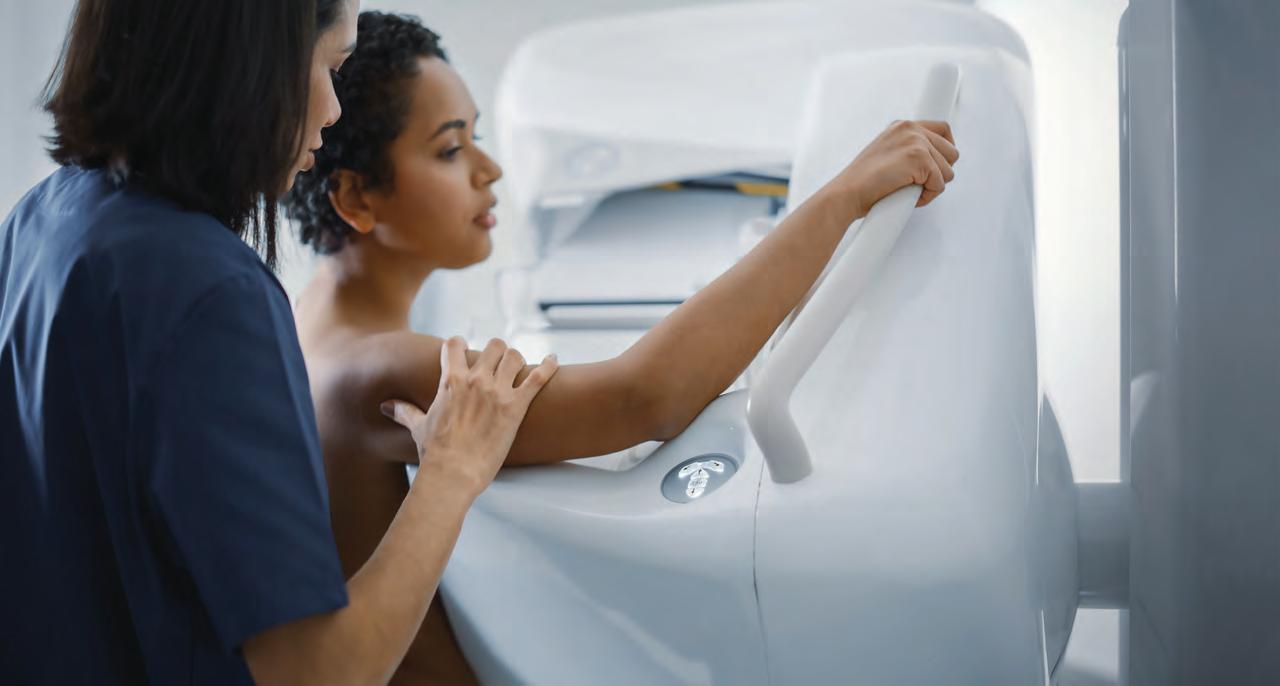
With the tremendous strides made in cancer care, more and more survivors live long and active lives after their treatment ends. But the key to lifelong health does not stop there. Specialized services can help you manage the physical and emotional impacts of your disease during and after treatment.
The cancer survivorship program at the Houston Methodist Neal Cancer Center at Sugar Land is the first of its kind to be offered in Fort Bend County. It is designed to improve the physical, social, psychological and spiritual health of cancer survivors and caregivers.
“We believe that survivorship starts at diagnosis,” said Dr. Andrew Johnsrud, board-certified hematologist-oncologist at Houston Methodist Oncology Partners at Sugar Land. “The goal of our survivorship program is to help our patients along every step of their cancer treatment and beyond.”
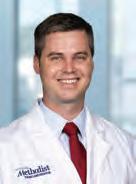
The cancer survivorship series offers support groups and classes free of charge. Topics include:
■ Thriving Through Creative Arts — offers survivors a chance to express themselves through creative arts, including drama, dance, music and poetry.
■ Life in Motion — designed to improve balance, coordination, and agility along with enhancing social and emotional health.
■ Music4Life — designed to encourage support among likeminded individuals using musical experiences. This group provides an outlet for emotional and self-expression, coping skills, and creates positive relationships. No talent is needed to benefit, and Music4Life is led by a boardcertified music therapist.
Th ese programs not only provide physical benefits, but also promote community. Survivors are able to meet and interact with others who have lived through similar experiences.

“No one should feel like they are alone on their cancer journey,” Johnsrud said. “Community and connection with others, who are also survivors, can have a big impact on healing.” •
Houston Methodist Sugar Land Hospital is Fort Bend County’s only hospital with the American College of Surgeons – Commission on Cancer accreditation. The care team achieved such accreditation by continuously proving commitment to providing highquality, expert care to the local community.
Our compassionate and supportive team provides the full scope of cancer services, including screenings, genetic testing, diagnostics, leading edge treatments, the latest technology and access to clinical trials.
Houston Methodist Neal Cancer Center at Sugar Land offers:
■ Specialists who collaborate to deliver the most effective treatment plan for you
■ Personalized treatment plans leveraging the most advanced technology and techniques available, including immunotherapy and minimally invasive procedures
■ Oncology nurse navigators who provide support through and beyond your recovery
■ Screenings and educational events to help prevent cancer
■ High-risk programs designed to help prevent cancer through nutrition, education, genetic counseling and disease surveillance
To request an appointment with a cancer specialist, visit houstonmethodist.org/cancer-sl or call 281.201.6669
For more information on Houston Methodist Neal Cancer Center at Sugar Land’s cancer survivorship series or to register, visit houstonmethodist.org/ events and search for “Cancer Survivorship Series” or call 281.205.4514.














